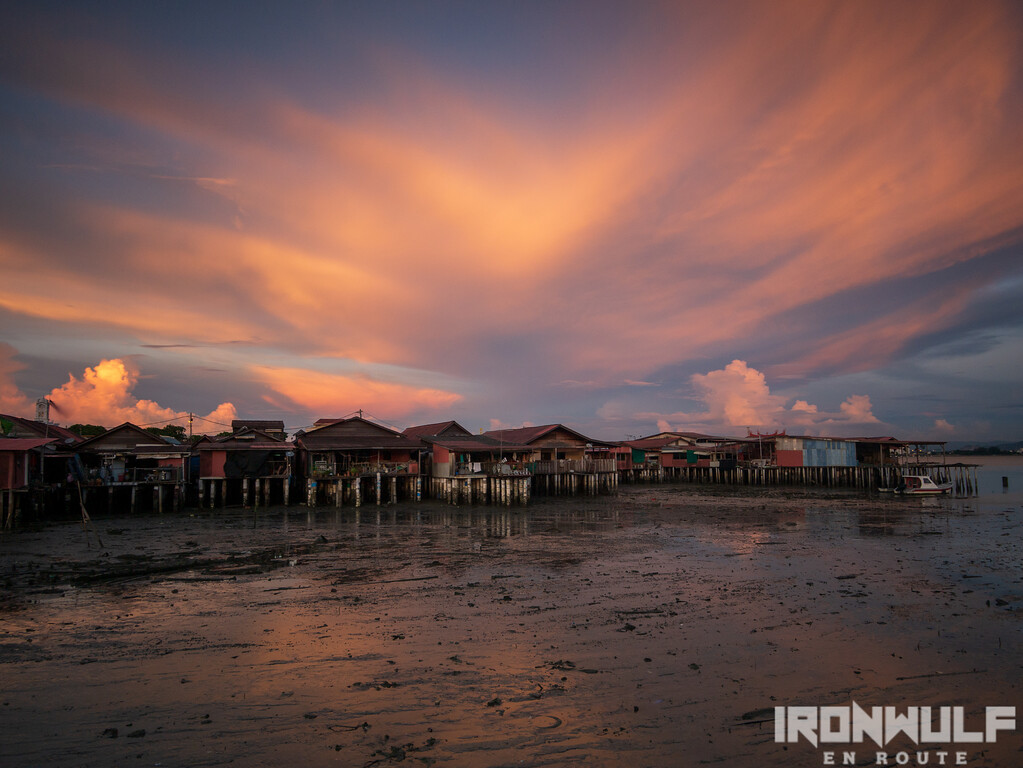The Philippines is no stranger to water world communities or people living on stilt houses by the sea. Like the Badjao’s of Mindanao or the community of Rio Hondo in Tawi-tawi, the UNESCO-listed George Town interestingly have their own version in Clan Jetties. But unlike our communities here, these jetties are owned by different Chinese “clans” or families which often can-do merchants or rich families. There are currently seven Clan Jetties. I visited a couple including the tourist-friendly Chew Jetty. This was still part of the KKDay Historical George Town tour but I managed to return to the area for my own exploration of this intriguing seaside community.
Clan Jetties
The water world village of Clan Jetties is easy to find at Weld Quay. It’s at the eastern end of Harmony Road (Lebuh Chulia St.). When the quay was developed in 1882, several jetties were made from stacks of planks and firewoods near the area. This was utilized as a mooring point for sampans (small boats) that brings in cargo. Several Chinese families built their own jetties and these didn’t go out without rivalries and disputes. Eventually a number of Chinese families settled in to closely manage their jetties.

Before, communities here have to contend with bringing in water from the mainland but now pvc pipes are used to direct water to houses. Electric lines were installed. I’m not too sure about sanitation though as I saw a public toilet that leads directly to the water. One thing that remains until now is that the people living here don’t pay taxes since they live on water and not on land.

UNESCO Effect
Since George Town got listed and awarded as a UNESCO World Heritage site in 2008, the scenario changed dramatically. On one side, people welcomed the development and growth in tourism which means more livelihood to the locals. For the clan jetties, it was a boon because there were plans to decimate the area considering them as slums. There used to be 20 clan jetties, some were cleared, other razed by the fire. The seven remaining survived and became part of the heritage trail, citing the importance of this community in history.
With this change, people’s life had to adjust. The resident communities living by the jetty had to contend with the flow of tourist. A once quiet neighborhood had some houses converted into commercial establishments. Some who decided to stay to the inner side of their houses to find solace.
Chew Jetty
Of the seven jetties, Chew Jetty is the most tourist-friendly. It is also the largest of all the jetties. Found at the far north end of the quay, there is a small temple stands and an amusing looking mural of a happy granny and probably her grandson at the entrance. The narrow plank pathways is enough for two motorbikes to fit. So occasionally, there would be bikes passing by.
There are souvenir shops, fancy cafes and eateries. There are even homestays too. There’s a large docking area towards the end where fishermen would dry fish. Seems to be used as jump-off for dragon boat activities too. There’s a temple at the end where the Penang bridge can clearly seen. I heard Chew Jetty is the only jetty that still observes their traditional rites. I could also see there are still a few residents here with signs to respect their home. A private property. Chinese influence can be clearly seen with small altars by the house entrance.

Tan Jetty Sundown
I headed back to the main road and found the entrance to Tan Jetty. This place I had interest due to it’s landscape photography potential. After inspecting the location, sunrise looks like the ideal time to go here. Afternoon though is a lot layback with warm sky as the backdrop for the low-tide patterns at sea. After taking photos and a little chat with some of the tourist who were also taking photos I just sat on one of the plank walkways and enjoyed the view while watching the light dissipate and city lights glow. I think this is the charm of the clan jetty area. Keeping its traditional Chinese heritage alive as the metropolitan city grows.
Going to Clan Jetties
The Clan Jetties can be found along Weld Quay (Pengkalan Weld) near Swettenham Pier. I was able to walk here from Komtar in around 10 minutes. You can also take a RapidPG bus ride from the center of Georgetown, ride bus numbers 307 and 401E.



Ferdz Decena is an award-winning travel photographer, writer and blogger. His works has found print in publications such as Singapore Airlines’s Silver Kris, Philippine Airlines’ Mabuhay, Cebu Pacific’s Smile and Seair InFlight. He has also lent his expertise to various organizations like the Oceana Philippines, Lopez Group Foundation, Save the Children and World Vision, contributing quality images for their marketing materials.





